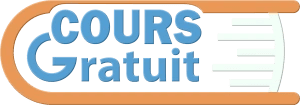Business model canvas template Excel

Business model canvas template Excel free
This article provides details of Business model canvas that you can download now.
Microsoft Excel software under a Windows environment is required to use this template
The business model canvas (also known as the Canvas business model) is a structuring tool proposed by Alexander Osterwalder in 2008, following his doctoral thesis. The tool is intended to describe everything that concerns a business in Zones 9 in a framework (Canvas), according to the list below:
- Customer segment: It is the division of your customers according to the characteristics, needs, attributes or other similar points.
- Value offer: How your company differentiates and provides something unique to the defined customer segment.
- Distribution channels: Train the company to contact the chosen customer segment. Typically involves marketing or logistics.
- Relations: The way in which the company interacts with the chosen customer segment.
- Sources of income: Describes how the business will generate income within the corporate structure.
- Main characteristics: Main assets and intellectual, physical or human resources that a business needs to operate.
- Key Activities: These are the essential actions that must be performed for the business to function properly.
- Partnerships: Companies, organizations and any other public of interest who support and facilitate the operation of the company.
- Cost structure: Describes the costs of the company resulting from the operation of the business model in question.
Customer Segments
This part describes your consumer by answering questions such as who are your consumers? What do they think, feel, see, or do? This part allows you to learn if the business targets one or multiple market segments, the persona for each segment, and the service provided for consumers. The expected output is a persona for each consumer segment.
Value Propositions
What is the value delivered to the consumer? Which consumer’s problem does the product target? How do we satisfy our consumers? After setting up the persona based on the customer segment section, this part focuses on the value provided for each segment and improves the competitive position of the product or service. These facts help us to build a priority list of the value propositions and link it with the consumer personas.
Channels
Where will the product be sold or promoted? Why choose these channels, and why are they efficient? This part focuses on where communication between the business segments and value propositions takes place. For example, a kitchen product that solves a heating problem while cooking (value proposition) can be purchased by housewives (target segment) through their online store, Amazon, and local distributors (marketing channels).
Customer Relationships
How does the company interact with its consumers? How does the company manage this relation between the product or service and costumers? In this part, you determine how you plan to communicate with the consumer during or after the product’s sale. This leads to questions regarding the best method to communicate with consumers in order to deliver the value proposition.
evenue Streams
Where will the revenue come from? This part links the segment, proposition, and channel elements. For example, revenues (a) will come from segment (b) by providing proposition (c), through channel (d). In the previous example, the revenues will come from selling the kitchen product to housewives through Amazon.
Key Activities
What are the activities required to deliver the value proposition, distribute the products through channels, build a customer relation, or have a revenue stream? This section includes working with partners, improving the product, or collecting feedback from consumers. All the activities related to delivering the value proposition should be included in this section.
Key Resources
What resources should be present in order to deliver the value proposition and compete in the market? This also includes the resources involved in other aspects, such as customer relations, distribution channels, and achieving the revenue stream. The resources vary from one product to another based on the nature of the production process. It can be infrastructure, human resources… etc.
Key Partnerships
Who are the business partners and suppliers involved in the sales process? Those partners may be involved in delivering the value proposition to consumers by acting as a sales channel or customer support agents.
Cost Structure
What is the business model cost? Which elements are the most expensive? This section includes both direct and indirect costs involved in the business model. It should describe the cost of each of the above elements.
These templates Excel of Business model canvas, work on all versions of Excel since 2007.
Examples of a ready-to-use spreadsheet: Download this table in Excel (.xls) format, and complete it with your specific information.
To be able to use these models correctly, you must first activate the macros at startup.
The file to download presents three templates Excel of Business model canvas
